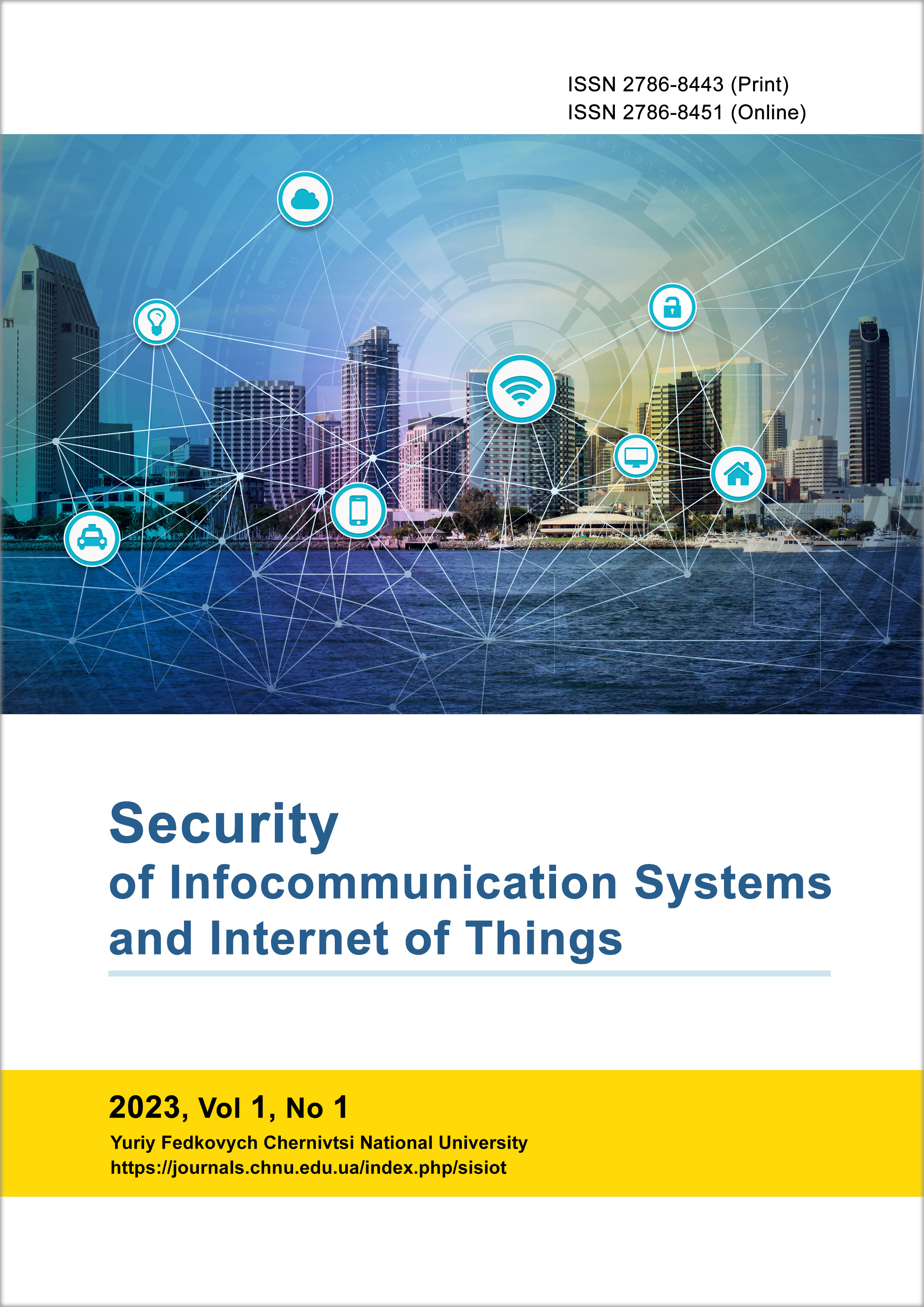Artificial Intelligence Techniques for Mobile Station Location Estimation
DOI:
https://doi.org/10.31861/sisiot2023.1.01006Keywords:
mobile station, positioning, fuzzy controllerAbstract
Modern wireless communication systems require positioning functions, which provide are automatic location estimation of stations within a network. However, when new networks are implemented, much higher accuracy is required when determining geographical coordinates of a mobile station to develop of services related to the station location. To solve the problem of mobile station positioning, its geographical coordinates are calculated, coordinates of the closest base stations being known. The paper proposes to use a genetic neuro-fuzzy controller for improving the effectiveness of positioning a mobile station. Positioning methods providing usage of artificial intelligence methods are based on measurements of levels for signals from the closets access points or base stations, their coordinates are known. The proposed localization method is based on values of received signal strength indicator – RSSI. At the same time, the RSSI method has a disadvantage – low accuracy, which is proposed to be increased by applying methods of artificial intelligence – fuzzy logic, neural networks, genetic algorithms. Therefore, the objective of this paper is to elaborate an optimized method for determining location of a mobile station. In compliance with the suggested method, RSSI values and ToA values enter the genetic neuro-fuzzy controller, after corresponding processing, the distance from the mobile station to the base station appears at its output.
Downloads
References
J. He, “Research on Mobile Node Localization Optimization Algorithm in Wireless Sensor Networks Based on Monte Carlo Method,” Wireless Communications and Mobile Computing, vol. 2022. Hindawi Limited, pp. 1–12, Oct. 20, 2022. doi: 10.1155/2022/7131099. https://www.hindawi.com/journals/wcmc/2022/7131099/
M. Bala Krishna and M. N. Doja, “Data Gathering and Data Management Techniques in Wireless Sensor Networks,” Wireless Sensor Networks. CRC Press, pp. 331–353, Apr. 21, 2016. doi: 10.1201/b13092-12.
T. Ahmad, X. J. Li, and B.-C. Seet, “Fuzzy-Logic Based Localization for Mobile Sensor Networks,” 2019 2nd International Conference on Communication, Computing and Digital systems (C-CODE). IEEE, Mar. 2019. doi: 10.1109/c-code.2019.8681024.
L. S. Ezema and C. I. Ani, “Artificial Neural Network Approach to Mobile Location Estimation in GSM Network,” International Journal of Electronics and Telecommunications, vol. 63, no. 1. Walter de Gruyter GmbH, pp. 39–44, Mar. 01, 2017. doi: 10.1515/eletel-2017-0006.
M. W. P. Maduranga and R. Abeysekera, “Bluetooth Low Energy (BLE) and Feed Forward Neural Network (FFNN) Based Indoor Positioning for Location-based IoT Applications,” International Journal of Wireless and Microwave Technologies, vol. 12, no. 2. MECS Publisher, pp. 33–39, Apr. 08, 2022. doi: 10.5815/ijwmt.2022.02.03.
Chen, C.-S. (2012). Artificial Neural Network for Location Estimation in Wireless Communication Systems. In Sensors (Vol. 12, Issue 3, pp. 2798–2817). MDPI AG. doi: 10.3390/s120302798
Z. Zhang, F. Jiang, B. Li, and B. Zhang, “A novel time difference of arrival localization algorithm using a neural network ensemble model,” International Journal of Distributed Sensor Networks, vol. 14, no. 11. SAGE Publications, p. 155014771881579, Nov. 2018. doi: 10.1177/1550147718815798.
M. Alakhras, M. Oussalah, and M. Hussein, “A survey of fuzzy logic in wireless localization,” EURASIP Journal on Wireless Communications and Networking, vol. 2020, no. 1. Springer Science and Business Media LLC, May 07, 2020. doi: 10.1186/s13638-020-01703-7.
P.-C. Chiu et al., “An Adaptive Location-Based Tracking Algorithm Using Wireless Sensor Network for Smart Factory Environment,” Mathematical Problems in Engineering, vol. 2021. Hindawi Limited, pp. 1–10, Oct. 18, 2021. doi: 10.1155/2021/4325708.
Y.-C. Chiou and L. W. Lan, “Genetic fuzzy logic controller: an iterative evolution algorithm with new encoding method,” Fuzzy Sets and Systems, vol. 152, no. 3. Elsevier BV, pp. 617–635, Jun. 2005. doi: 10.1016/j.fss.2004.11.011.










